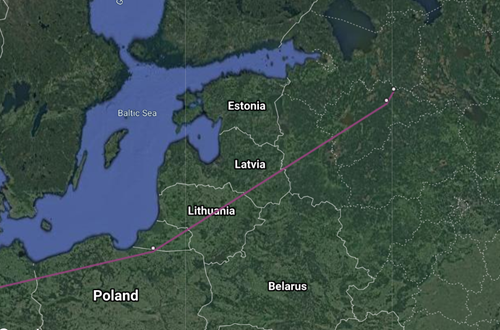Although we are no longer tagging new woodcock as part of the Woodcock Watch project, some of the existing tagged birds continue to transmit. One such woodcock is Fonthill Abbie II who was caught in Wiltshire in 2016.

In many ways, Abbie’s migration is typical of the average woodcock. She originates from an area of western Russia that a large proportion of our tagged birds return to, particular those that winter in southern England and Wales. Like the vast majority of our tagged birds, she returns to this same breeding site every single spring. In the winter, she returns to the same site in Wiltshire where we caught her.
Sunny spring weather must have given Abbie’s solar-powered tag a boost as it has reappeared on our map with a flurry of new data. This begins with two fixes in Wiltshire on the 10th and 12th March. By the 17th, she was in northern Poland close to Gdańsk and Kaliningrad. We know she stayed here until at least 1st April and then transmitted again one week later at her usual Russian breeding site 150 km southeast of St. Petersburg.
What makes Abbie special, and what contributes the most to our increasing understanding of woodcock, is that she has now done this five times (2016, 17, 18, 19 and 20). While we can state that woodcock are faithful to a single breeding site, for many of our other woodcock we have just two or three years’ data. Really long-term datasets, like Abbie’s, provide information that can really put this claim to the test. By providing us with good spring migration data every year, she’s allowing us to see how the timing of her migration and the location of her stopovers change over time.